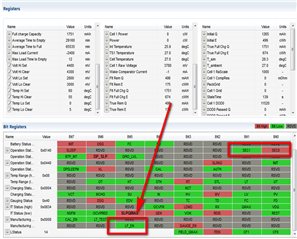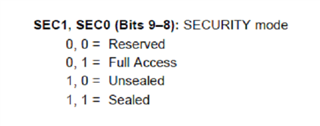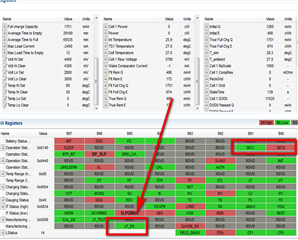Other Parts Discussed in Thread: EV2400, BQSTUDIO
Hello, expert,
When I use the BQ27Z561, I found that sometimes the data cannot be written after converting to HDQ:
For example, if I send an open lifetime command to the battery, after reset, the lifetime will be closed again;
Or when I write the Manufacturer Info to the battery in the data memory, the Manufacturer Info returns to the default value after re-reading.
Can you help me analyze what is causing this and is there a way to avoid such a problem.





